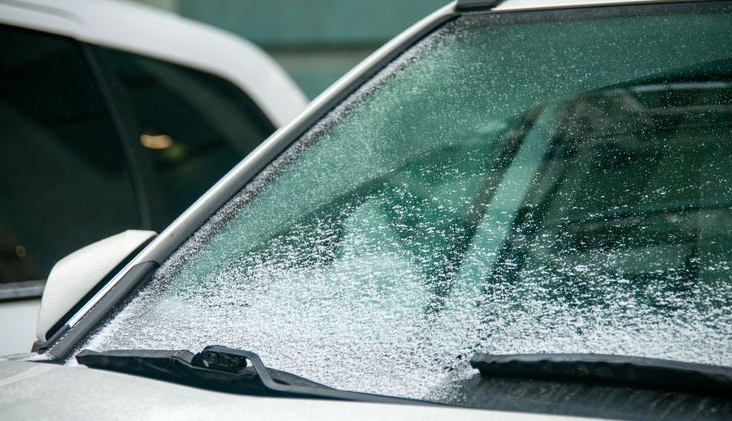An experienced driver can sometimes detect a minor detail in a car’s interior and deduce that there is a problem with the vehicle.
Most car owners don’t take notice of a peculiar detail when glancing at their neighbors’ cars parked in the snowy lot. Some cars have frost on the inside of the windshield while others are clear. It may seem insignificant, but in reality, it’s not. Although the warm air from the car’s heater will quickly melt the ice, it will then turn into water droplets that require wiping. In truth, an icy windshield is a significant concern.
The ice on the inside of a windshield is formed when water vapor from the air inside the cabin condenses, which is a result of humidity. If the humidity is caused by puddles left on the rubber mats from melted snow on the shoes of the driver and passengers, expelling the moisture will put an end to the formation of ice on the windshield.
If the rubber mats underneath are dry, and the windshield still frosts over after parking, it indicates that there is a continuous presence of excess moisture inside the cabin. In a less severe scenario, the humidity in the air can be attributed to issues in the ventilation system, such as a cabin air filter that hasn’t been replaced in a long time.

When a car’s ventilation system is obstructed, it can result in inadequate airflow and ineffective removal of fumes. Furthermore, humidity from wet clothing or shoes can exacerbate the issue. Fixing the problem is simple: replacing the filter with a new one will result in a clean windshield and an improved driving experience during winter mornings. However, if the filter is in good condition and the ice on the windshield remains, it’s cause for serious concern.
This indicates that moisture is consistently entering the cabin, possibly through a loosely attached windshield seal. Even the slightest crack can lead to perpetual dampness within the car’s interior. The resulting consequences aren’t just limited to a frozen windshield, but also corrosion of the car body from the inside out. The only solution to such a disaster is to replace the windshield with a new one or reinstall the existing one with fresh rubber seals. Although it may be costly and difficult, there are no other viable options available.
Furthermore, in relatively old cars, the material of the pipelines that transport antifreeze from the engine to the heater can age over time, causing cracks to form. Through these openings, the antifreeze can leak and evaporate inside the car. The only solution to this problem is to disassemble the front of the cabin and replace the old pipes of the heater, which can be expensive and frustrating. However, inaction can result in the corrosion of the car body, making it a necessary and urgent task.

